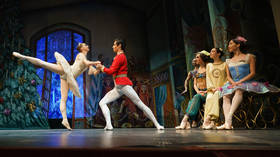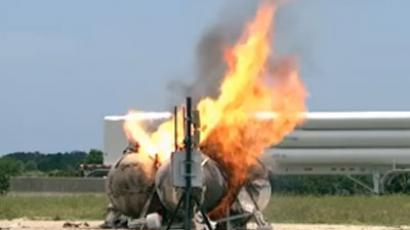NASA shells out award for 'ninja star' supersonic plane design
NASA has awarded a $100,000 grant for the development of a ‘ninja star-shaped’ plane capable of supersonic travel. The groundbreaking aircraft is capable of turning at 90 degree-angles mid-flight, transforming it into a supersonic jet.
The creators of the new plane have designed it to fly like a normal aircraft, but upon reaching supersonic atmosphere levels the craft rotates, and then flies at twice the speed of sound."We are inventing the ways in which next-generation aircraft and spacecraft will change the world and inspiring Americans to take bold steps," Michael Gazarik, director of NASA's Space Technology Program told the Huffington Post.The plane’s rotation is designed to reduce air resistance during faster-than-sound flight. In order to take off, the craft uses its two longer wings to achieve subsonic speeds. The larger wingspan would cause unwanted drag in supersonic flight, so the plane spins 90 degrees in order to give itself a more aerodynamic profile.The revolutionary dual-design means that the plane poduces "virtually zero sonic boom" when it breaks the sound barrier, its creator claims.Gecheng Zha of the University of Miami, the plane’s designer, said that the mid-flight rotation would not be uncomfortable for passengers, and would reduce G-force pull on takeoff. “Imagine a flight from New York to Los Angeles that only takes two hours instead of six, and from New York to Tokyo in just five instead of fifteen,” Professor Zha said.The planned plane design is still a work in progress, and is not expected to see a working model for at least a few decades.














